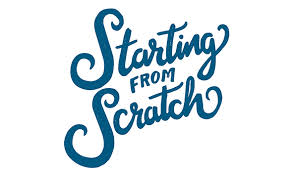Displaying items by tag: tlcJan14
Got Vision? Time for an Endowment!
by Kirk Walden, Advancement Specialist
How many of us have sat down and begun penning ideas for the future of our ministry or organization, dreaming big dreams of what we could do if we just had more funding? I know I have, many times.
I've sketched out additional rooms, even a new building. At other times I scribbled down notes on new initiatives, created a list of new staff members and more.
The challenge for me—and perhaps for you—is in the "getting there" part of the equation. As an executive director, investing millions of hypothetical dollars in the future of our ministry was easy. Finding those funds; well, that was the hard part.
As we launch into 2015, let's throw out a realistic way to at least begin our journey toward a bright, fully funded future for our ministries: An endowment.
We might say, "Endowments are for hospitals, colleges, universities—big organizations. Not for us." We would be quite incorrect.
Endowments are for all of us, and an endowment is a terrific way to build up a funding stream for our basic needs so we can stretch our organizations into new initiatives, new and improved facilities and other places God is leading us.
In short, an endowment is a fund whereby only the interest earned or a pre-determined amount is spent each year for our organization's overall budget or for a specific area of ministry.
C'mon, dream with me for just a second. Let's take off our "realism" hat and ask, "Wouldn't it be nice if our basic budget was funded by an endowment and every dollar raised could go toward something new to better reach and serve those we see?"
Maybe it's just me, but I think this would be great. While I realize that creating an endowment of this size for any ministry would be quite a reach in the realism department, it is possible to start building an endowment today that, over time, could fund a growing portion of our work. And one day, who knows where that might lead?
We will only know how far we can go once we get started. And if we don't already have an endowment, the time to start is always "now."
In this issue of Advancement Trends in the Life Community, let's take a good look at this funding mechanism. As we do, we might find a path to a bright future for our ministry.
Click here for more of this month's Advancement Trends in the Life Community.
From "Rainy Day" to "Savings" to "Endowment"—We Need All Three
by Kirk Walden, Advancement Specialist
Making the case for an endowment begins with not only knowing what an endowment is, but also understanding what it is not.
For instance, an endowment is not our Rainy Day Fund. Every ministry needs to have some cash on hand for times when giving slows, so that the work goes on and staff is paid. Experts tell us that having 3-6 months of cash on hand—just in case—is a good number.
Also, our endowment is not our savings fund for a future project. If our board of directors is wanting to set aside funds for a new initiative, a building fund, or to invest in a new staff member, this would be separate from an endowment.
With an endowment, we build a principle amount and either withdraw interest earned (some or all—this can be a board decision made annually), or a specific amount (Ex.: "We will withdraw $5,000 per year for budget purposes, unless endowment gifts are under the withdrawal amount.") on a pre-determined basis.
We can be flexible with endowment withdrawals, based on need. Or, we can let the endowment grow for a period of time, with no withdrawals.
Overall, our goal with our endowment is to continue to grow its principle so that more and more of our basic ministry needs are met with these funds.
Endowments can be general (for the overall budget) or specific (an endowment for our medical arm, for instance). We can also have multiple endowments. As an example, should a donor family want clients to receive Bibles, an endowment can be created (a minimum amount for an endowment should be established by the ministry; perhaps $10,000 is a starting point).
With multiple endowments, a donor may ask, "How can I give toward your abstinence program?" and we would be able to respond, "We can direct a portion of your gift toward today's need, and set aside a percentage of your gift in our Abstinence Initiative Endowment." This allows us to be more creative in building our resources; but more important, allows donors to be more involved in where their gifts go and how they are used.
Every ministry needs its Rainy Day Fund, and when new ideas arise, Capital Funds can get us started toward funding these ideas. In addition however, Endowments make sense and as we will see elsewhere in this issue, help us raise more funding.
Click here for more of this month's Advancement Trends in the Life Community.
Why an Endowment is Attractive to Donors
by Kirk Walden, Advancement Specialist
Endowments are not only a good idea for our ministries as we look to the future, they are also a strong avenue toward attracting donor interest and support today.
First, endowments allow donors to see their gifts (to the endowment) as more permanent. Knowing that a gift is not going into the ministry account only to be spent within days is attractive to certain donors; especially those who can give major gifts.
Second, simply having an endowment tells our financial partners we are in this for the long haul. This long-term outlook gives us more credibility and lends itself to more gifts.
Third, as an endowment begins funding (even small) portions of the organization, we can communicate this to our donors. They are more likely to respond to our future requests because they see their gifts as funding "bigger" aspects of the ministry.
Finally, keep in mind that endowments are a particular niche for—as we mentioned above—certain donors. They are attracted by the concept of saving for the future, and of a "permanent" fund that keeps their gifts mostly intact—giving those gifts longevity.
As an example, when your author became an executive director I noticed we had almost no memorial or honorarium gifts. To spark interest in this type of giving, we created our "Commemorative Fund" whereby all gifts went into an account where only the interest earned would be used for the ministry.
Immediately, after implementing this idea (and the fact that we placed memorial gifts and gifts in honor of the living on our response devices), these gifts soared. Our fund grew into the tens of thousands of dollars over a few years, after receiving just $25 in the year before changing our approach.
An endowment then, is not only a way to fund the future; it can also be an avenue to reach donors in a new—and for many, a more attractive—way.
Click here for more of this month's Advancement Trends in the Life Community.
Starting an Endowment from Scratch
by Kirk Walden, Advancement Specialist
"We don't have anything like an endowment," I'm told by many pregnancy help organization CEOs. If this is the case, starting at zero means something good: We are starting! From any beginning point, we can build, step-by-step. Here are several ideas:
Start with Commemorative Gifts
You'll find in the article, "Why an Endowment is Attractive to Donors" the idea of taking gifts in memory of a person (or in honor of a living person) and placing them in an account where only the interest is used for advancing the ministry. This is an endowment.
If you are currently using many of your memorial and honorarium gifts as part of the budget, you can take even a percentage of those gifts and place them in the new endowment, so as not to harm your current budget. You might find that these gifts rise when you make the announcement.
Announce your intentions publicly in E-blasts, newsletters and appeal letters. Make sure response devices (in print and on your donor web site) clearly point out where these gifts will go and how they will be used.
As an example, if your ministry receives an average of $250 per month in these gifts, placing them all in an endowment will give you a $3,000 endowment in your first year. It's a start, right?
A percentage of each gift . . .
As we look at starting, consider placing a percentage of every gift in your new endowment. At just 2 per cent, a center with a $200,000 income budget will place $4,000 in an endowment in that first year. Again, we have a beginning!
Ask!
Why not place one more appeal letter in your yearly development plan and ask specifically for gifts toward a new endowment that one day will fund a large portion of the ministry? Recipients can be reminded that these particular gifts will "keep on giving" for generations to come.
This is a way to not only begin a fledgling endowment; this letter will identify those who are endowment minded and who may be capable of continuing to build your endowment in the future.
The key to starting an endowment is getting started. Even a "small" start is a start.
Click here for more of this month's Advancment Trends in the Life Community.
Endowments Should Provide Income—Let's Get a Return on Our Investment!
by Kirk Walden, Advancement Specialist
Endowments, even "small" ones, can begin providing regular income for your organization. But with interest rates so low, where do we go to find that income?
This is where a financial advisor comes in. The board can choose a financial advisor by asking interested parties to "interview" for handling the endowment funds on behalf of the ministry, or perhaps there is a trusted advisor who will invest the funds for the board on a pro bono basis.
To fulfill its fiduciary responsibility, the board appoints the advisor to make day-to-day decisions and report back to the board regularly, so the board is aware of the account's status. This way the advisor is not constantly asking the board, "Can I move this portion of the fund into cash? May I invest in this particular mutual fund?"
In this scenario, the board sets parameters with the advisor and gives the advisor its capacity for financial risk. Boards are generally risk averse; a good thing. But, "no risk" can mean "no return." A board that balances its concern over immediate risk with an eye to long-term objectives does well. In the end, a ministry is going to be more conservative in its investment risk than many individuals, but will always have a percentage of its funds in stock funds.
Two quick notes
First, a ministry may want its stock investments to reflect the ministry's views on abortion, not wanting to invest in companies that choose to support the abortion industry. There are mutual funds available with this in mind. Consult with a financial advisor.
Second, a board does not want to weigh itself down with managing individual stocks given by donors. A good policy is to take any individual stock gifts and sell them, turning the stock into cash. From there, the financial advisor (in the case of an endowment) can invest the funds with the overall investment plan in mind.
Click here for more of this month's Advancement Trends in the Life Community.
Thank you letter - February 2015
Each month Advancement Trends in the Life Community brings to you a "thank you letter" that you can send to your donors. February's letter is below:
Dear Joe and Jane,
February means Valentine's Day; a time when many of our young people are desperately "looking for love." Young people want to know they are valued—loved. Yet, we see many who are sold the idea that love somehow must involve intimate physical involvement.
And whether through TV, online, other media or from friends, too often our clients are led to believe that physical involvement is the very definition of love.
When they come in our door however, these valuable young people are offered a life-changing, counter-cultural message they aren't getting on MTV, the most popular web sites or on their IPod.
We want each person who comes our way to know what love truly is, to know that love comes without conditions, and to realize that they can love and be loved, and that waiting for marriage is a concrete, powerful way to show true love.
Your gift makes this possible, and because of your gifts young people are not only hearing this message here, they are responding positively. As we talk with those who come to us, we see more and more that teenagers desperately want to know what the standards should be, and want to believe they can live up to those standards.
Young people want to be loved. But more important, they need to know what love is. Your support is making that happen, and we appreciate you.
Sincerely,
CEO
by Kirk Walden, Advancement Specialist
Click here for more of this month's Advancement Trends in the Life Community.
Click here to download this thank you letter as a word document.
What Happens "Beyond the Budget?"
by Kirk Walden, Advancment Specialist
Boards of Excellence
As board members, a primary responsibility is to monitor the budget and make sure the organization is wisely stewarding the funds entrusted to its care. At the end of the year, a reasonable goal is to finish with more funds in the bank than when we started, right?
Yet if a board isn't looking at what happens "after the budget," it is missing the bigger picture.
Beyond the budget, we must consider the amount of funds we are setting aside for next year, the next and the next. Ultimately, we must lay in place a financial foundation for future boards, staff members and most important, those who come in our doors as clients.
For forward-thinking organizations, an Endowment provides this foundation. Webster defines "endowment" as "a large amount of money that has been given to a school, hospital, etc., and that is used to pay for its creation and continuing support," but we can go further. For our non-profit organizations, an endowment is a fund we can draw upon (whether we use only the interest accrued or choose to withdraw a certain amount each year) to fund different aspects—or a large portion—of our ministries.
Every non-profit organization needs to at least carefully consider an endowment. Used wisely an endowment can be a perfect blend of faith and stewardship, two attributes that should complement each other.
Whether a ministry is launching an endowment or looking for ways to grow this fund, one starting point is the ministry budget. Placing a line item in the budget for the endowment reminds us each month that a portion of today's funds should go toward a better tomorrow.
Whether we start with $50 per month or $5,000, we are on our way to a brighter, more successful future for our ministry.
Click here for more of this month's Advancement Trends in the Life Community.
What is it like to be “Poetry in Motion?”
by Kirk Walden, Advancement Specialist
"For we are his workmanship, created in Christ Jesus for good works, which God prepared beforehand so that we would walk in them." Eph. 2:10
As I reflect on Sanctity of Human Life Sunday, I am reminded of this beautiful verse from Ephesians. How wonderful that we are created like poetry – with workmanship.
The words, "Poetry in motion" are generally defined as someone moving gracefully. It's a phrase used to describe anyone from a fabulous dancer to the moves of an elite basketball player.
Most believe that the term began with the 1961 song Poetry in Motion, by Johnny Tillotson. The idea however, may have started much earlier, in the New Testament.
Paul writes in Ephesians that we are God's "workmanship," this particular word coming from the Greek word "Poema." This is the same word of course, from which we glean the idea of a poem. It is not a stretch then, to say that we are in fact, God's poem. We are created to do good works to change our world.
Tweet this! It is not a stretch then, to say that we are in fact, God's poem.
Years ago I heard a children's poet tell a class of elementary students that when writing a poem he often went through more than 100 drafts before finding the words, the rhythm, and the connection his readers needed so that he could say, "Finished."
I doubt God needed 100 "drafts" when creating us. I'm sure He got it right the first time. Yet, we can be assured that just like a poet, God took great care in creating each of us—and Paul tells us He did so for a reason: Good works.
If nowhere else, here we can see the sanctity of our own lives and all human life in God's careful creation!
Serving in a pregnancy help organization truly reflects a desire to do these good works, works God created for us to "walk in them."
Every client, every patient, every resident, every single person we come across is an opportunity to walk in a good work God desires for us to complete.
So take heart. We are God's poems – created in his workmanship – and as we move forward to serve, assist and walk alongside those we see, we are truly "Poetry in Motion."

